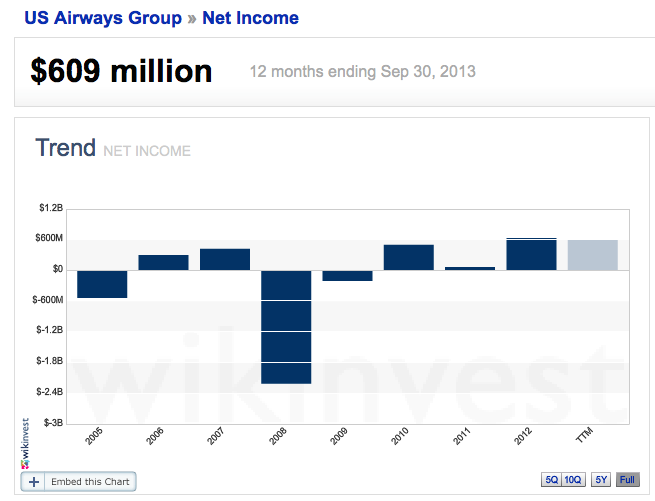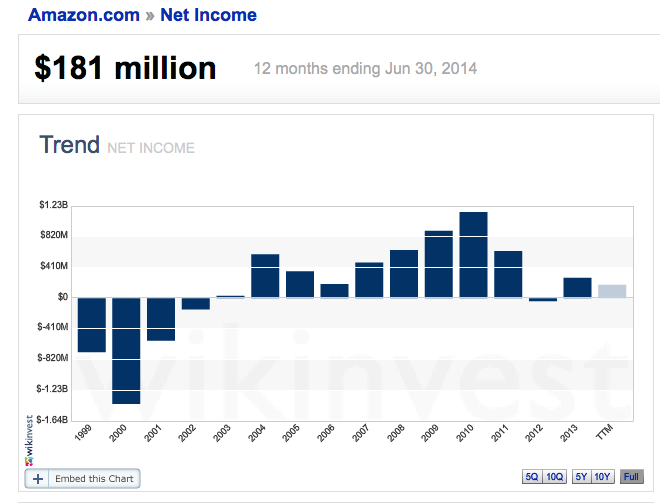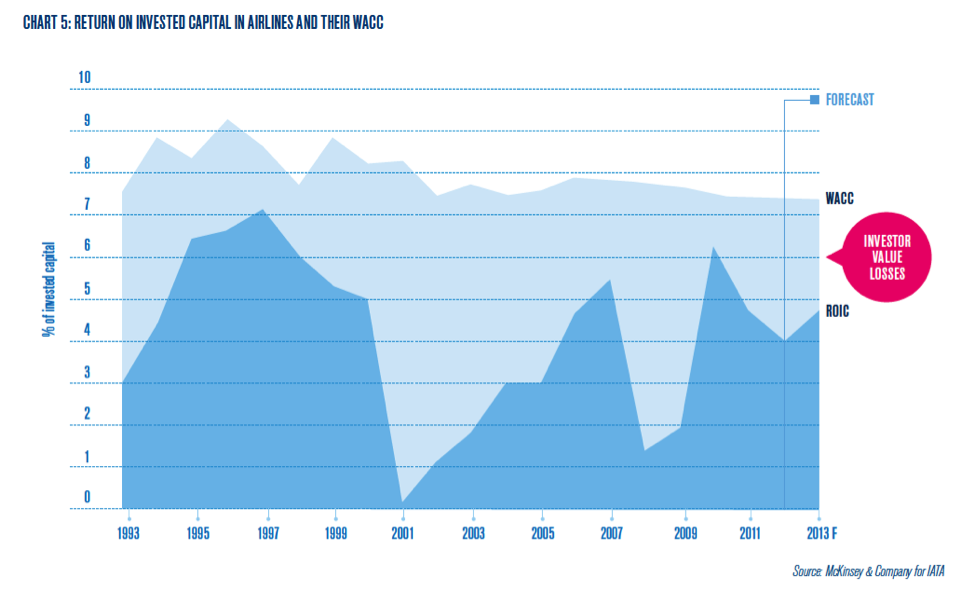In a commerce class in school, I was taught that the point of a business is to earn a profit. Online retail startups have certainly caused me to question this notion.
Money, money everywhere; not a cent to be earned!
I find it quite amazing that there is immense investor confidence in a business that is unable to turn a profit even with millions of users on board. The best (perhaps the only) analogy for the current online retail scenario would be the airline industry.
When airlines started flying people in the 40’s; there was a lot of excitement about growth opportunities, and the loss-making nature meant that governments owned most airlines – more as status symbols rather than viable businesses. Eventually, private companies got into the game and operating running airlines as well. At the time, it was believed that with increasing connectivity between several cities as well as an increasing number of people using airlines, it was expected to become a viable business and a profitable business. But, as time progresses, we can see that this expectation has not been met. On every occasion, other reasons have been blamed for the lack of profitability in the sector: SARS, 9/11, hijacking, disappearing planes, and so on. Nonetheless, airlines have not been able to consistently turn a profit. This has resulted in many mergers and acquisitions, amalgamations, and even bankruptcy.
The only type of airlines that have been successful are the ones which have specialised in a very specific segment (corporate/business customers) or geographical region. The sad consequence is that one of the bigger airlines always acquires the profitable operation and tries to scale it, resulting in its inevitable decline.
Online retail, by comparison, is a far more recent phenomenon. Ideally, it should be compared with retail, which is what it promises to replace. To date, the success (in turnover) of online retail has relied on discounting. Walmart also relies on discounting, and by relying on any means necessary (paying extremely low wages, providing hard terms to manufacturers, etc.), they have managed to run a business that is highly profitable.
With Flipkart securing a funding of $1 billion, followed instantly by Amazon announcing to pump $2 billion, there has been a lot of commentary about online retail and the opportunities that lie ahead.
I think the point of a business is to create value, and that value creation results in profits. A retailer makes it easier for you to explore a multitude of products, compare brands and buy them. The online retail industry provides nearly the same service offering, along with the added convenience of being able to shop from home. The only difference is that the retailer sources the goods at a lower price than the one at which it is sold to you. Unfortunately, the selling price of products on online retail platforms is lower than their purchase price.
Is it not amazing how similar the profitability trends seem? Essentially, there is none.
US Airways Vs. Amazon
Different industries, same struggle.
Now, I understand that for certain businesses, in order to be profitable, you need to have a minimum base of customers. Social Networks are shining examples of how that works. Having said that, if you cannot make something work profitably with 20 million customers, how will ramping that number up to 100 million make any difference? Even if you do make a profit, the margins are going to be in the low single digit percentages. I find it hard to justify investing billions of dollars to generate a profit in the millions (and most likely tens of millions, and not hundreds).
This chart sourced from an IATA’s 2013 report shows how well the returns have worked out for the airline industry. Investor value destruction!
I believe the online retail industry is headed the same way, at least from the point of view of “all-under-one-roof” retailers.
Similar to the case of airlines, there is some oasis of hope. There are online retail firms, not unlike the airline industry, which specialise in a very narrow segment of product offerings. DollarShaveClub, Bonobos, NastyGal, Diapers.com, and closer home, Myntra.com, are examples of models that work well. Unfortunately, similar to the airline industry, these smaller firms, which will never have very high turnovers, are acquired by larger players, since it makes for a nice press release and helps keep investors at bay. At the time of acquisition, the larger firm tries to “integrate the business” and benefit from the “synergies”, and end up running the business to the ground. If they leave it alone, it may just work – it has shown success in its current form after all! This has happened time and again in the airline industry; it remains to be seen how it plays out in online retail.
So why the investments? Well, if we come back to Flipkart, the investors invest a large sum of money into the company because it furthers the company’s chances of an IPO. If the company is sitting on $500 million in cash in 12 months’ time and files for IPO, they will certainly be able to sell through the IPO and exit neatly. The CEO, on behalf of the investors, made clear the hopes that would be sold to IPO investors – A $100 billion valuation. So, even if they project a $20 billion valuation at the time of listing, which would be close to three times the valuation at which the funds were raised (if rumours are to be believed); as compared to $100 billion, it will still appear as though there is still more value to be unlocked. And as far the current investors are concerned, 300% in 12 months is not too bad a deal, is it?
If Amazon were to be used as a benchmark, the possibility of running an online retail business with decent profit margins seems remote. To add to that, Amazon itself has always been ready to enter into a price war with anyone who strays into its territory, since its investors seem quite satisfied even if the company posts a loss. Therefore, if profits ever exist, they will always be extremely low.
Will Flipkart be able to keep hopes up without turning a profit? Well, only time will tell!










Rishi
Well, you can’t compare airlines to retail. One has been operating under an inflationary environment (increasing fuel costs) and the other under deflationary (decreasing software and IT infrastructure costs). Plus, you need to ideally look at cash flows and financial health (ratios) to see where the money is being spent; market cap/valuations and returns to investors doesn’t tell the entire story. Amazon, though not as good as Google or Apple is still healthy in that sense. As for flipkart, no body will know as long as they don’t reveal their financials or go public. Amazon has always been focused on grabbing market share by sacrificing short term market returns. Flipkart — not sure what their strategy is.
Vivek Srinivasan
Their financial structures are definitely not alike, but I mean to talk about their destinies. Profits that keep skipping to either side of zero. Constant acquisitions which go nowhere. Net value destruction.
Navin Kulkarni
Seems like you are concerned about flipkart doing something wrong 🙂
Try suggesting how can they do it right?
Karan Vazirani
Vivek,
This ” value” creation bit , that you talk about is exactly whats going on through my mind right now. Infact i started to write a piece on this very subject last night.
Being a vendor with most of the E-commerce websites, the business of most companies makes no sense whatsoever. Its very troubling. The customer benefits, i ,as a manufacturer get my bit, but the commissions these sites charge! Their discounts far,and i repeat FAR, exceeds their commissions!! Just beats me,how this can be sustainable.Its crazy .
I understand , some of them have in-house brands to cover the margins, but i doubt ,that these are enough.
Nice article.Cheers
Amit Shroff
Hi Vivek,
Read your article, really nice and true. Most of the online retailers are just pumping money to make it big so that investors can recover money through IPO or selling it to other bigger retailer etc.
The problem, I currently see in online market is price, people and online retails are just concern about price, hence compromising on quality, service and failing to meet customer expectation.
Some of the reason for low profit for these online retailers are (this is what I feel):
I have worked with several clients in India & US, its primarily in India where you have FREE Shipping concept, rather in US you will have to pay extra if you need same day delivery etc. Hence in order to be successful, the industry need to change its approach, follow certain standard and process instead of just fighting over price with each other.
Being an online retailer I think that the over head cost should be lower then physical store, if not then your existence don’t make sense. Since If you are unable to pass on the benefit to customer and make profit then what is the use.
With the same through we started Print a Wallpaper last year. Trust me we are doing well in terms of no of orders and monthly traffic (yes we don’t have too many orders since the product is expensive, but we have small regular orders and we are happy about it), since we don’t expect that we should grow overnight. Hence we are thinking of introducing new product and bring large format printing to customer’s door step.
I believe you need to make profit if you wish to give good service to your customer and treat your staff well, because the first person to suffer due to losses will be your staff and this will eventually leads to bitter customer experience. Like you see in case of Air India, etc when their staff go on strike and poor customers are left to suffer.
So some quick points, if you wish to grow and do well. Let me know your thoughts:
Vivek Srinivasan
I am not concerned about Flipkart doing something wrong. I feel the industry dynamics are working wrong. They should focus on value creation for their investors (the IPO guys who will finally own these guys/ not just the VCs). The way they are going, things seem uncertain. In my opinion, it is the Electronics segment that is haemorrhaging money because the margins on those products are very low and the incentive to buy online is only price. This results in unnatural discounts.
My friends bought a Moto G on flipkart and the screen broke, nowhere to go to get it repaired and Flipkart is not able to help. If he had bought it at a shop, he would have had somewhere to go to. Hence poor incentives to purchase electronics online.
VCs want electronics to be sold on the platform because they are high value and push the gross revenue; and therefore the valuation up. I really do not know what is the way out of it, but I am sure that they can work out a solution if they really wanted to.
Vivek Srinivasan
You know when an Investor gets involved, they want the business to grow quickly so that they can get a good exit. Now this is where the incentives are misaligned. To do things the right way, you need to consider every aspect and make sure you build a robust and sustainable model. But that takes time and does not bring about explosive growth. The method you describe will work from the point of view of sustainability, but won’t result in a Billion dollar turnover in 6 years!
Give stuff away at prices lower than that the price you bought it at and the growth skyrockets. Simple economics. But is it sustainable?
Amit Shroff
Vivek look at all big brands like coke, pepsi etc.. they were not build in a day.. took years.. so my simple approach is you need to give time to show result.. I agree with you…!!!
Rishi
I hope you’re not referring to Amazon, because I don’t see how it falls into this category. just go through their annual report and you’ll know what I’m saying. Look at some numbers like cash and cash flow from investing activities.
Pankaj Bhatia
Hi Vivek,
Nicely written! I understand the comparison you make between online retailers & airlines – and as you rightly pointed out in the comments, the destiny appears following the same trajectory.
Now I have worked as a vendor with a major online retailer (would not like to name names) and sometimes it just amazes me that if you see the offer to the customer on their site – the price would not even cover the taxes or shipping. For the products we supply, shipping is a major cost. So in a sense, this online retailer is paying from its pocket for the shipping, taxes, and other overheads – including but not limited to warehouse, packing, customer support costs. It just doesn’t end here – if customers buys goods above a certain amount, they can even get the products even further discounted by up to 25%. How does this make any sense?
From the perspective of a vendor, if I am supplying the same goods to a brick & mortar business, and if they would have similar pricing for the customer, they would be taking a massive hit every time they sell one of my products, I would certainly believe that the business in question is a fly by night operator and is just building volumes to project to its vendor, with high chances of disappearing from the scene any day. My immediate reaction as a supplier should be that I stop business immediately! Why should anyone think differently about an online retailer?
It is also important to understand the effects of these unimaginable discounts on the brand value of the product – although that is a completely discussion, better left for another day.
The purpose of any business at the end of the day is to make a profit. Although I understand, that at times it would be a strategic decision to build up scale, before starting to make a profit, but in my opinion this time frame for building scale cannot be indefinite.
What’s the guarantee that by the time these online retailers have build up the scale, they have in their minds and start increasing the prices of the products they sell to their customers – there would be a new kid on the block, who would destroy these best laid plans. As a customer, I would always look for a better deal !
Just my 2 cents, am new here – hope I am making some sense.
Cheers!
Alok Rodinhood Kejriwal
Vivek – its uncanny – I pitched this idea internally and to the ET (comparing Online and Airlines)
Watch out for my piece too
Vivek Srinivasan
Please share the same. Will look forward to it.
On an additional note I was talking to a well known investor yesterday and he told me an interesting fact. Off the 1.2 billion people in India, only 250 Mn speak English. And the entire online retail story is based on the assumption that 500 Mn internet users would shop online. They are not even catering to a large segment of this market!